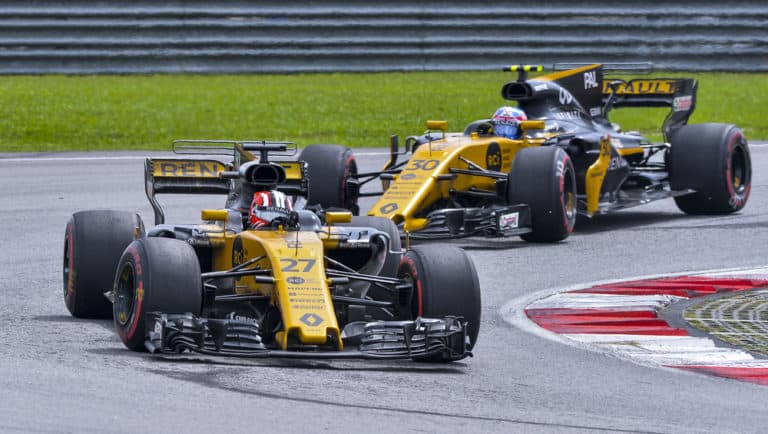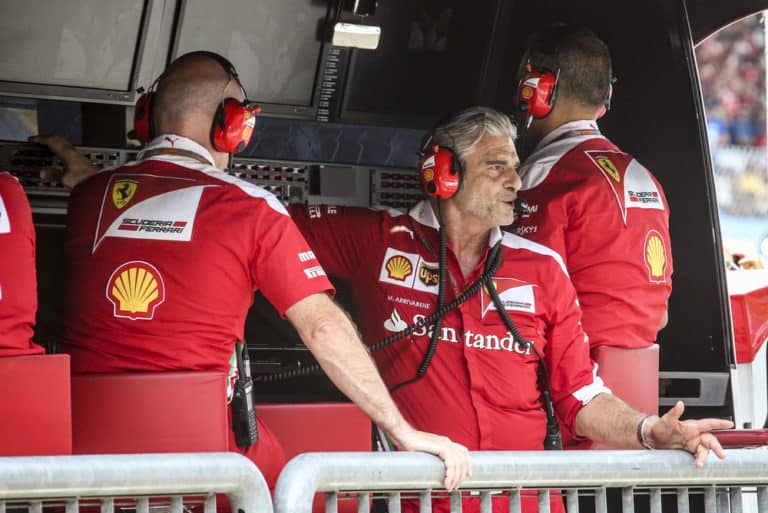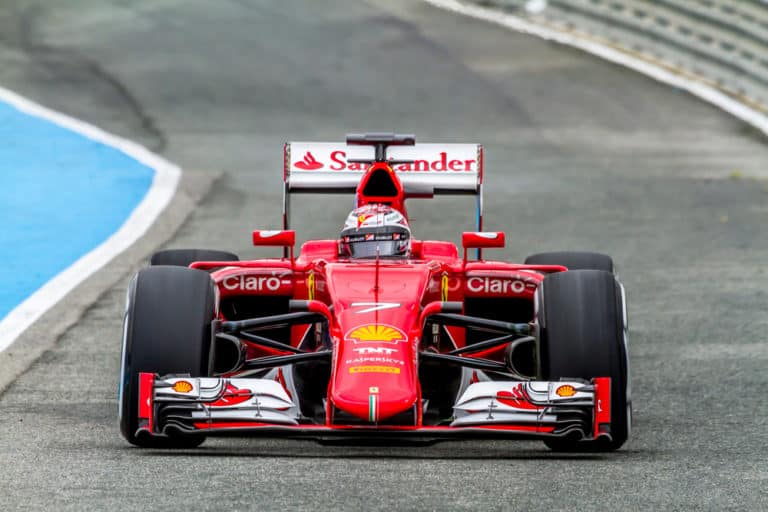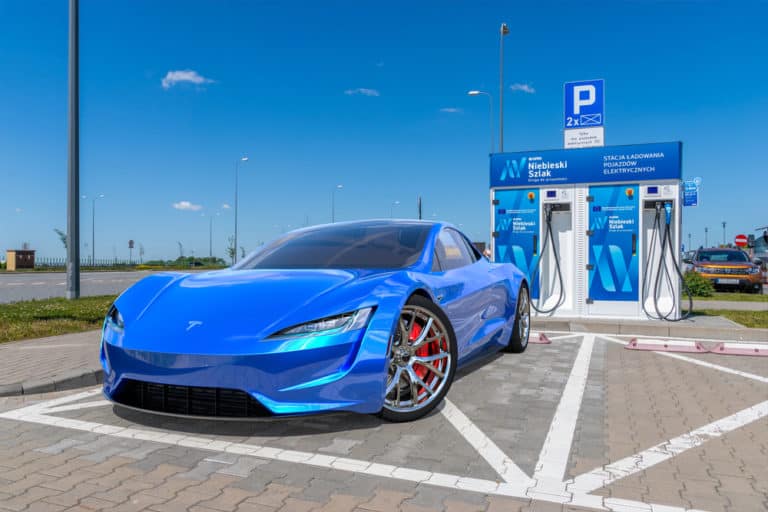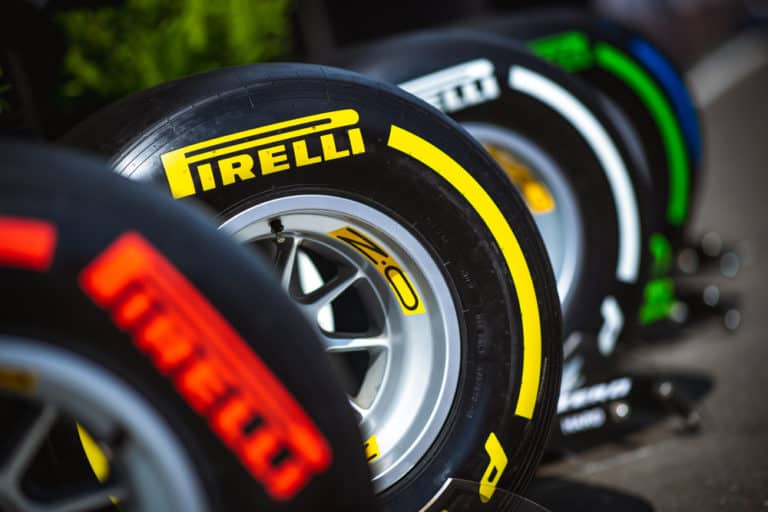F1 is one of the most technical sports, and it’s packed with numbers. However, the ones that attract the most attention are those carried by the drivers.
Race numbers are part of the identity of each driver, as it is his hallmark during all his career and is used in his car and all his merchandising. Each driver develops a kind of connection with their number as time passes.
Throughout history, many drivers have carried many numbers, and some have become iconic because of who has worn them or because of the things that have been achieved with them. Some numbers have been used more, some have been carried by legendary drivers, and some have been more successful, but what is the best number in F1?
In this list, we will review the best F1 numbers, either because they have gone down in the sport’s history because of those who carried them, the feats that were achieved with them, or any curious and interesting data about them.
But before we move on to the best F1 numbers, let’s go over a bit about their history and how they are assigned to get familiar with the system.
If you’re looking for some F1 merchandise, check out the awesome stuff at the official F1 store here.
F1 Number Rules
Until 1973, each race organizer randomly assigned numbers, so drivers frequently changed their numbers. Running the same number race after race was first introduced in 1974. The numbers were given to the teams based on the 1973 constructors’ championship and kept them for as long as they were in the sport.
However, these numbers were not entirely fixed. Each year, the team that had the driver that won the championship from the previous year was given # 1 and # 2, and their numbers were given to the team that previously owned them. Basically, an exchange of numbers.
The lower teams could also change their numbers if a team retired from F1, but more commonly, they decided to stick with their previous numbers.
This system was changed in 1996, from when the numbers would be changed every year. The driver’s campion’s team would still take # 1 and # 2, and the constructor’s champions (if it was not the same) would take # 3 and # 4 and so on with the rest of the teams.
This system was maintained until 2014, when the permanent number system was introduced, in which each driver chooses a number and keeps it for their entire career. This was done to create a hallmark so that the fans can easily recognize the drivers, just like in MotoGP.
Best F1 Numbers
No. 1
The number 1 is the most appreciated by all drivers, since it is the privilege of very few and carrying it in your car means having won the Drivers’ Championship and, therefore, being the current world champion.
Most of the great drivers in F1 history who have won a championship have worn # 1 on their cars: Michael Schumacher, Alain Prost, Sebastian Vettel, Mika Hakkinen, Fernando Alonso…
Unsurprisingly # 1 is the most successful number in F1. In total, 12 titles have been won with this number. These 12 championships have been the following:
- Alain Prost in 1986 after winning his first title in 1985.
- Ayrton Senna with his third world championship in 1991 after also winning it in 1990.
- Michael Schumacher in 1995 after winning his first title in 1994 and between 2001 and 2004 after starting winning with Ferrari in 2000.
- Mika Hakkinen in 1999 after winning the championship with McLaren in 1998.
- Fernando Alonso in 2006 after having also won in 2005 with Renault.
- Sebastian Vettel between 2011 and 2013, with his dominant years at Red Bull beginning in 2010.
But analyzing this data, # 1 is the most successful number in the history of F1 due to the back-to-back successes of Michael Schumacher and Sebastian Vettel in recent times, as ignoring their dominating stages only Prost, Senna, Schumacher himself in 1995, Hakkinen and Alonso have achieved titles carrying this number.
In 2022, Max Verstappen will carry # 1, so perhaps he will be able to add another world title for both himself and this number.
No. 27
# 27 was one of the first numbers to earn iconic status mainly for two reasons. The first reason is that it will always be associated with the legendary Canadian driver Gilles Villeneuve.
Villeneuve is one of the best drivers who never won a world championship. Although he only wore number 27 in 20 of his 67 GPs, he will always be associated with this number for his heroic actions during the 1981 season with a mediocre Ferrari. He carried it when he died in an accident at the 1982 Belgian GP.
The other main reason is being associated with Ferrari for many years. The 1970 rule made some teams link to certain numbers, but Ferrari’s most remembered union is 27 and 28.
And it is that in 1980, Ferrari had # 1 and # 2 because Jody Scheckter won the title in 1979, but the winner of the 1980 season was Alain Jones for Williams, which at that time was a relatively new team, so they carried numbers high up the order.
Ferrari then stuck with Williams’ previous numbers in a dry spell for the Italian team, which didn’t win the drivers’ championship until 2000. During the 1980s and ’90s, everyone strongly associated the numbers 27 and 28 with Ferrari.
Ferrari managed to shake off these numbers in 1990 when Alain Prost joined the team as the reigning champion after winning the title with McLaren. Despite this, the English revalidated the title and regained number 1, yielding again # 27 and # 28 to Ferrari, which they kept until the regulations changed in 1996.
No. 5
Like # 27, there are other teams and drivers who will always be remembered alongside numbers that they carried for a long time or with those who managed to win the title, the most notable case being Nigel Mansell with number 5.
When Mansell joined Williams in 1985, the team carried # 5 and # 6. Still, to make a greater difference between the two numbers, they painted the English driver’s number in red, creating a spectacular combination between the colors of the team at that time (yellow, blue, and white) and the red of the number.
The five became highly visible in the driver’s car, and BBC commentator Murray Walker began calling him “Red 5”. On his return to Williams in 1991, Nigel once again wore that mythical # 5 with which he also achieved his only world championship in 1992. Of his 31 victories in Formula 1, 27 of them were with that number, which accompanied him during 93 GPs.
Also, another interesting fact about # 5 in F1 is that, apart from # 1, it is the most successful number in the sport. Eight different drivers have won the title with it on their car, more than any other number. Drivers like Nigel Mansell, Damon Hill, and Sebastian Vettel carried it when they won the world championship, but only Nelson Piquet won more than one title with it in 1981 and 1983.
It is Sebastian Vettel who has carried this number since 2015, as he chose it through the permanent number system of 2014.
No. 0
Damon Hill raced in 1993 and 1994 with a very particular number: 0. In 1992 and 1993, the two world champions, Nigel Mansell and Alain Prost, respectively, retired after winning the title.
Williams was the constructors’ champion both in 1992 and 1993, and it was Mansell and Prost’s team when they won, but instead of giving them # 1 and # 2, they assigned the team # 0 and # 2, as the rules dictated that if the champion defender retired, number 1 was replaced by 0.
Damon Hill stuck with # 0 in 1993 and 1994, and his teammates, Alain Prost in 1993 and Ayrton Senna in 1994, stuck with # 2. There are no specific reasons for this choice, as Damon Hill was clearly a number two to Prost and Senna, but it could be a preference of the French to choose the # 2, since he won the title with that number in 1985 and 1989, and would do it again in 1993.
The only exception to this rule occurred precisely in 1974, the first year of the system’s implementation: Jackie Stewart retired at the end of 1973 when he was champion with Tyrrell and Lotus, who won the constructors’ title, used # 1 and # 2 in 1974. Thus, Ronnie Peterson, who never won the world championship, enjoyed racing with number 1.
We may not see any driver with the number 0 in F1 anymore since the current number system does not allow drivers to choose it, but in F1, you never know.
No. 13
In a world as technological and advanced as that of Formula 1, it is strange to talk about superstitions, but one remained for many decades. And is that when the number system was created in 1974, the number 13 was deliberately removed to avoid any possible superstition among drivers or team members.
Thus, one team had # 11 and # 12, and the next had # 14 and # 15 directly. With the permanent number system of 2014, # 13 was added, and Pastor Maldonado, known for his accidents on the track, chose it, without fear of superstitions, and raced with it at Lotus in 2014 and 2015, although without much success.
The only driver who carried this number before Pastor Maldonado was Moises Solana in 1963, but he did not finish the race due to a break in his propeller.
No. 44
Despite never having made it into a race between 1974 and 2014, the number 44 is the third with the most victories and world championships in F1 history, with 81 wins and 6 titles. But this is due to only one driver: Lewis Hamilton.
And this is due to Hamilton’s decision not to race with number 1 every time he has been a world champion. That is why since 2014, the number 1 has not been present in F1, since Hamilton has not used it, and in 2016 Nico Rosberg retired after winning the championship.
The British are statistically the best driver in history. Since the introduction of V6 engines in 2014, he has broken all kinds of records alongside Mercedes, creating one of the longest dominant stages in F1 history.
Hamilton uses # 44 because his father’s car license plate had F44 when he started karting, so he started karting with the number 44 and chose it in 2014 to wear it in F1. In 2022 we will see # 1 again, thanks to Max Verstappen, the current world champion, who has chosen to use it instead of # 33.
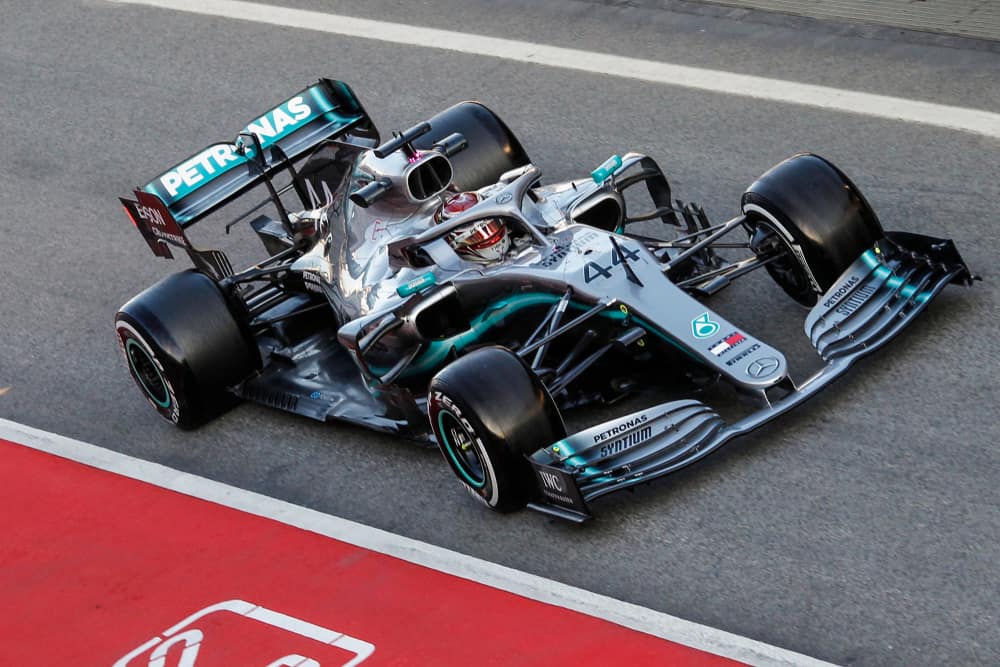
No. 6
The number 6 has been associated with number two drivers for a lot of its time, as # 6 has typically been the number of the second driver of the third-best car, but in reality, with 61 wins and 4 world titles, # 6 is the fourth number with more victories and championships.
Some “number two” drivers like Riccardo Patrese, Jacques Villeneuve, David Coulthard, Giancarlo Fisichella, and Juan Pablo Montoya have won races with the number 6, with 5 for Patrese, 4 for Villeneuve, and 1 for the last three each.
However, if we have to associate # 6 with anything, it would be with the Rosberg family.
And it is that the Finn Keke Rosberg carried this number during much of his sporting career, getting the world title in 1982 with the number 6, in addition to that 4 of his 5 victories in F1 were with it.
And 34 years later, his son, Nico Rosberg, emulated his father, winning the world championship in 2016 also with number 6. Most of his F1 victories were with this number as well, specifically 20 of his 23 wins, catapulting the stats of # 6 in F1.
No. 2
# 2 has also been associated with number two drivers and runners-up, as the world champion’s teammate has worn them most of the time. This, in turn, has helped the number 2 score many victories as it has almost always been in competitive cars.
Rubens Barrichello, Felipe Massa, Mark Webber, and David Coulthard are some of the number two drivers who have obtained the most victories with this number without ever winning a world championship.
Lewis Hamilton also had many victories with the 2 between 2007 and 2010, with 7 during his time at McLaren.
But undoubtedly, the best driver to have carried # 2 has been Alain Prost, winning three championships with it, as we saw earlier, in 1985, 1989, and 1993.
In total, 58 F1 victories have been achieved with the number 2, in addition to Alain Prost’s 3 world championships
No. 12
Number 12 is related to one of the most legendary drivers in the history of F1, nothing more and nothing less than the Brazilian Ayrton Senna.
He spent his three seasons with Lotus, from 1985 to 1987, wearing the number 12 and winning his first F1 race with that number in 1985. He also wore it during his first world championship with McLaren in 1988. Of his 61 victories in the category, 14 went with the number 12
And as a curious fact, 12 is a good number to get your first F1 victory. Niki Lauda, Gilles Villeneuve, and Jenson Button also claimed their first F1 victory with this number.
No. 3
The number 3 has 52 wins and 2 titles in F1. It had barely any success between 1974 and 1996 due to the fading Tyrrell team throughout that time. Still, from 1996 onwards, it was held by the team’s lead driver that had finished either first or second in the previous year’s constructors’ championship. Like # 2, it was usually in competitive cars.
Michael Schumacher won the world championship in 2000 for Ferrari with an impressive record of 17 wins in one season with # 3. Jacques Villeneuve took seven wins in his championship season of 1997, carrying it as well.
Many drivers have won races with this number, such as Michele Alboreto, Fernando Alonso, Jenson Button, David Coulthard, Mika Hakkinen, Lewis Hamilton, Juan Pablo Montoya, Jody Scheckter, and Daniel Ricciardo. Ricciardo has won 8 races since taking it as his permanent number, the last being at the 2021 Monza GP, which marked McLaren’s first victory in 8 years.
As a fun fact, Jody Scheckter became the only driver to win a GP driving a six-wheeler, wearing the number 3. One of the truly bizarre moments in motorsports and one of the most remembered by all.
No. 11
The number 11 was one of the most successful during 1970 because it bounced between Ferrari and McLaren as the teams traded titles, the only number ever to adorn two different title-winning drivers back-to-back, aside from # 1 and # 22.
At the start of the post-1974 system, Ferrari had had # 11 and # 12, and McLaren took them over when Niki Lauda, driving #12, won the 1975 title for Ferrari.
Here would begin one of the most iconic and remembered battles in the history of F1 between James Hunt and Niki Lauda. James Hunt’s # 11 McLaren won in 1976, sending the numbers back to Ferrari, and next year, Lauda, driving with # 11, won the 1977 world championship.
Lauda moved to Brabham the following year, taking # 1 to his new team and leaving # 11 and # 12 at Ferrari, and in 1979 it was Jody Scheckter who won the championship wearing # 11 again.
No. 22
The story of the number 22 is quite impressive. From 1996 to 2014, it seemed to be aimed at the less competitive teams, which was the case for most years. However, no one could have predicted that it would win two world titles in a row, with two British drivers, in 2008 with Lewis Hamilton and 2009 with Jenson Button.
And it is that in 2008, Hamilton won the world championship with McLaren wearing this number because the team was disqualified from the championship of the previous year due to the famous “Spygate” case in which Alonso and Ferrari were also involved. Hence, the team lost all his points and used the highest numbers on the grid for 2008.
In 2009, Jenson Button won the title with the newborn Brawn GP, which entered F1 as a new team and not taking the place of Honda, a structure that Ross Brawn acquired to completely reform, making his team the most successful in the history of F1, since they only raced one year and won the world title, obtaining a 100% success rate.
Conclusion
I hope you liked this list of what we consider the best F1 numbers and that you also learned a lot of new things.
Maybe some of them are not the most successful in history, but they do have quite interesting stories behind them, and they deserve to be told. What is your favorite?
Sources
- Insight: Formula 1’s iconic numbers – Eurosport
- Iconic F1 numbers – Photos (roadandtrack.com)
- The 10 most iconic racing numbers ever (drivetribe.com)
- La historia de los números en la F1 (autocosmos.com.ar)
- https://www.squadnumbers.com/2017/11/07/f1-numbers/
- F1 y números fijos: un paseo por los dorsales más curiosos y destacados de la competición – F1 al día (f1aldia.com)
- https://www.youtube.com/watch?v=pWxGxn8gMII&t=212s


